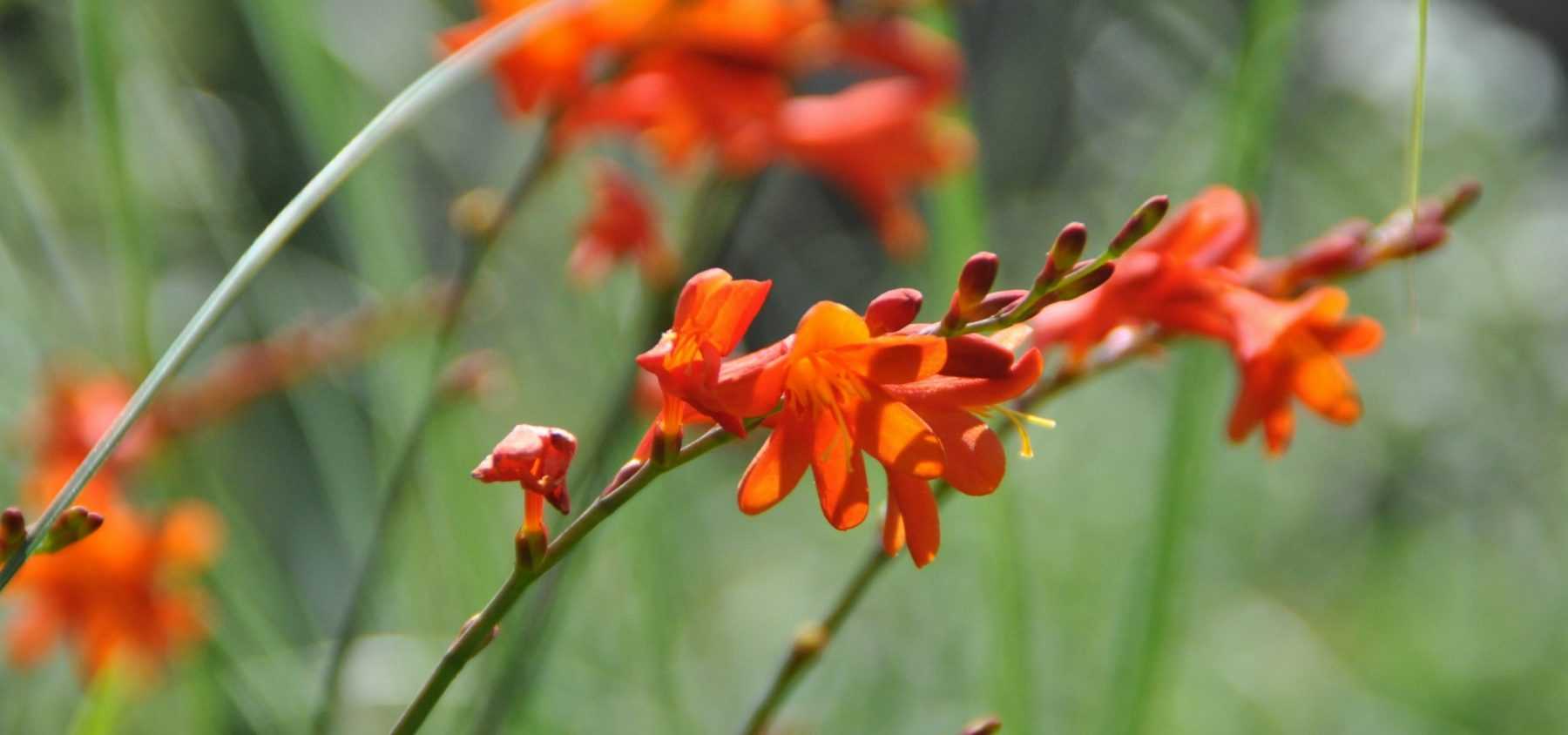
Planting hardy summer-flowering bulbs
Where, when and how to plant them
Contents
Hardy summer bulbs are perfect for bringing life to your garden during the warmer months, offering vibrant blooms with minimal maintenance. Once planted, they can remain in the ground for several years, delighting us each summer with their colourful flowers. Among them, you’ll find crocosmias, lilies, galtonias, as well as certain varieties of ornamental alliums and gladioli (such as Allium sphaerocephalon, Allium schubertii and Gladiolus byzantinus). Some lesser-known species, like tulbaghias, eucomis and triteleias, also prove relatively hardy. Discover all our tips for successfully planting these bulbs in your garden!
Where to plant summer-flowering bulbs?
Most hardy summer-flowering bulbs prefer a position in full sun, essential to ensure abundant and long-lasting blooms. However, some varieties can tolerate partial shade, particularly in warmer regions where dappled light protects them from the stress of the hottest hours.
These bulbs have a formidable enemy: excess winter moisture, which can cause their roots to rot. For this reason, prioritise well-drained locations. If your garden has heavy or clay soil, lighten it by adding gravel or coarse sand. Another tip is to plant the bulbs on a slight slope or mound to encourage water drainage.
Sunny borders, flowerbeds, and raised beds are excellent choices for planting these hardy bulbs. They blend well among other perennials that shield them from strong winds without casting shade, or among ornamental grasses for a natural effect. In gardens where drainage is challenging, consider growing them in pots or containers, allowing better control of moisture levels and the flexibility to move the bulbs as needed.
Read also
Planting rare and hardy bulbsWhen to plant them?
Summer-flowering bulbs are generally planted in spring, during April-May, once all risk of frost has passed and the soil begins to warm up. This allows them to take advantage of ideal conditions for establishing roots and developing before their summer flowering period begins. In milder climates or for hardier bulbs, autumn planting is possible, between September and November, when the soil is still slightly warm but temperatures begin to drop. This timing enables bulbs to establish roots before winter arrives, ensuring more vigorous growth in spring and optimal flowering in summer.
How to plant them?
Planting hardy summer-flowering bulbs is straightforward and can be done in just a few steps to ensure optimal blooming. Here’s what to do:
- Prepare the soil: Choose a well-drained spot, preferably in full sun. Loosen the soil to a depth of about 20 cm to encourage root growth. If the soil is clay-heavy, mix in gravel or coarse sand to improve drainage.
- Dig holes to the right depth: Generally, plant bulbs at a depth equivalent to two to three times their height. For example, a bulb measuring 5 cm in height should be buried about 10 to 15 cm deep. This depth protects them from temperature fluctuations and provides stability for proper growth.
- Space the bulbs apart: To prevent competition between plants, leave enough space between each bulb. On average, spacing them 10 to 15 cm apart is ideal, but check specific recommendations for each variety.
- Plant the bulb the right way up: Position each bulb with the pointed end facing upwards, as this is where new shoots will emerge.
- Cover and firm gently: Fill the holes with soil, then lightly firm it down to secure the bulbs. All that’s left is to water (sparingly, especially if the soil is still moist in spring).
How to care for them?
Hardy summer-flowering bulbs are generally undemanding, but simple, regular care ensures abundant blooms year after year. Here are some tips for proper maintenance:
- Water moderately during the growing season, slightly increasing watering during periods of intense heat or drought. Bulbs dislike excess moisture, so ensure the soil surface is dry before watering again.
- Apply fertiliser in spring, when bulbs begin to emerge. A balanced fertiliser or organic amendment (compost, well-rotted manure) will promote abundant flowering. Add a small dose of fertiliser during the flowering period to support the plant.
- Keep the base of the bulbs free from weeds to avoid competition for nutrients. Organic mulch, such as pine bark or compost, can be applied around the bulbs to retain moisture, suppress weeds and protect bulbs from winter cold.
- Remove spent flowers regularly to encourage new blooms and prevent the plant from exhausting its energy by producing seeds. However, leave the foliage in place until it yellows naturally, as it provides nutrients to the bulb for the following season.
- In regions with harsh winters, a thick mulch (straw, dead leaves) can help protect bulbs from frost. For more sensitive varieties, additional protection with horticultural fleece is recommended, or you can lift and store them in a cool, dry place until spring.
- Subscribe!
- Contents

































